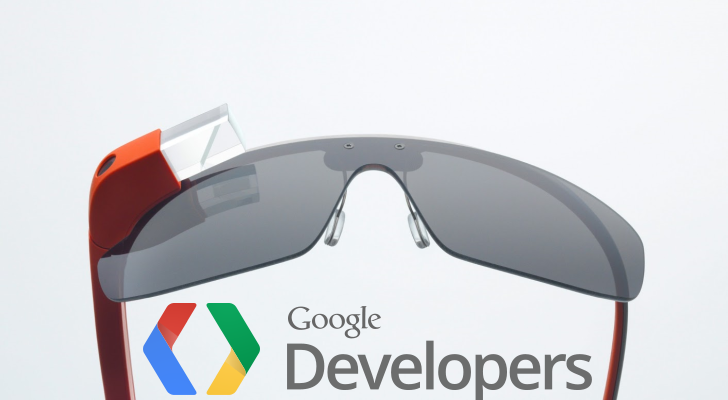Since the launch of the Google Glass, Google, with the help of the Explorer’s programme feedback, has been developing new applications, features and functionalities that are slowly being available in its smart glasses. During their launch we could see how the Glass can record and display photos and videos, call, send messages, chat or find an address, besides interacting with applications such as Facebook, Twitter, Evernote, Tumblr or CNN, among others. But this was only the beginning.
With the launch of the new Glass Development Kit (GDK) environment, developers can get much more out of the Google Glass, as up to now they were only able to create software (the so-called Glassware) through the Mirror API.
This new kit is an extension of the Android SDK that allows creating and running software directly on the Glass. It uses the same paradigms that Android developers are used to work with, so for those familiar with Android it will be much easier to start using this new kit. For those who aren't used to Android, Google provides a quick start guide for beginners.
From now on, therefore, there will be three ways to create Glassware: through the GDK, the Mirror API or a combination of both. However, Google recommends using the new development kit if you need interaction with the user in real time, offline functionality and direct access to hardware. If you prefer to have more independence, a common infrastructure and functions that facilitate the development, you should take into account the possibility of creating your applications through the Mirror API. However, with the hybrid model you can use the Mirror API and the GDK together through a common menu. This enables to leverage existing web properties in order to create richer applications.
Moreover, with the new development kit the applications deployed in the Glass may be used with or without an internet connection (for example, translations will be now made without internet). This is quite an innovative feature, since up to now it was essential to be connected to the Net.
To give you an idea of the possibilities ahead, Google has introduced five new Glassware applications created on the new platform:
Allthecooks: A programme to check out recipes.
Word Lens: A new word translator that allows the user to translate into his language words or phrases written on signs, advertisements, posters, etc.
GolfSight: An application for golfers with maps and game statistics.
Strava: An application for cyclists which registers the distance covered and displays progress.
Spellista: An interactive puzzle.
There are already many applications specifically created for Google Glass. In this list you can find many of them. In fact, some of Google's Explorers have managed to adapt the singularities of the Glass to their new creations. Some of the most innovative applications were presented during the International Symposium on Wearable Computers (ISWC), held in Zürich together with the International Joint Conference on Pervasive and Ubiquitous Computing (UbiComp):
– American Sign Language (ASL). This SMARTsign application developed by Glass Explorer + Kim Xu allows you to learn sign language through micro lessons directly from the Google Glass. It can be set to be launched at different intervals throughout the day, according to the user's preferences. About 90 percent of children who are born deaf have parents who can hear; however, many of these parents have difficulty communicating with their children as they don't know the sign language.
– Information tailored to the user. One of the ideas being developed by one of the Explorers participating in the event integrates an fNIRS sensor to receive information and notifications just when the user wishes to. This sensor, in very general terms, would be able to predict how busy the user is, and based on that deliver or not information in the Google Glass. The project aims to find ways to adapt the Google Glass to the needs of each user.
Your opportunity
If you are a developer and reside in the United States you still have the opportunity to join The Glass Explorer programme, although according to the company the admission is not fully guaranteed. However, Google has stated that it intends to expand this initiative gradually. The programme began in June 2012 with about 2,000 developers who attended the Google I/O conference, and the company wants to expand the invitations up to a total of 8,000.
Finally, if you want to see demos of the scope of the applications being developed for Google Glass, don't miss this video presenting the Glass Development Kit:
https://www.youtube.com/watch?v=oZSLKtpgQkc











